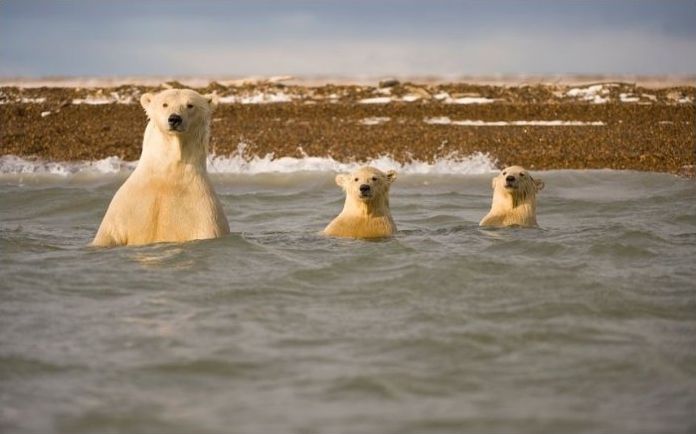Polar Bear Photography
|
The polar bear is classified as a vulnerable species, with 8 of the 19 polar bear subpopulations in decline. For decades, unrestricted hunting raised international concern for the future of the species; populations have rebounded after controls and quotas began to take effect. For thousands of years, the polar bear has been a key figure in the material, spiritual, and cultural life of Arctic indigenous peoples, and the hunting of polar bears remains important in their cultures.
The IUCN now lists global warming as the most significant threat to the polar bear, primarily because the melting of its sea ice habitat reduces its ability to find sufficient food. The IUCN states, "If climatic trends continue polar bears may become extirpated from most of their range within 100 years." The polar bear was listed as a threatened species under the Endangered Species Act by the United States Department of the Interior in 2008.
Constantine John Phipps was the first to describe the polar bear as a distinct species. He chose the scientific name Ursus maritimus, the Latin for 'maritime bear', due to the animal's native habitat. The Inuit refer to the animal as nanook (transliterated as nanuuq in the Inupiaq language). The Yupik also refer to the bear as nanuuk in Siberian Yupik. The bear is umka in the Chukchi language. In Russian, it is usually called бе́лый медве́дь (bélyj medvédj, the white bear), though an older word still in use is ошку́й (Oshkúj, which comes from the Komi oski, "bear"). In French, the polar bear is referred to as ours blanc ("white bear") or ours polaire ("polar bear"). In the Norwegian-administered Svalbard archipelago, the polar bear is referred to as Isbjørn ("ice bear").
|
|















